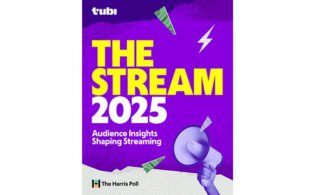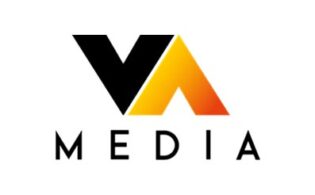VA Media’s Mark Ashbridge, Candlelight Media Group’s Scott Wiscombe and Nicely Entertainment’s Scott Kirkpatrick talked about the AVOD and FAST channel appetite for movies at the FAST Festival today.
The panel, moderated by World Screen’s Kristin Brzoznowski and available to watch here, featured Ashbridge, the CEO of VA Media; Wiscombe, senior VP of streaming operations at Candlelight; and Kirkpatrick, executive VP of co-productions and distribution for Nicely Entertainment.
Nicely has seen a “tremendous uptick in our AVOD numbers,” said Kirkpatrick of the independent producer and distributor. “We’ve prioritized AVOD as a rights category and prioritized how we’re going to be strategically thinking about AVOD moving forward.”
VA Media has built a movie network on YouTube “with over 15 million subscribers across a lot of different genres,” Ashbridge said. “YouTube appears to be becoming the biggest broadcast and AVOD platform. So, the rights that we are looking for and that we largely focus on are AVOD.”
Candlelight works in both AVOD and FAST, Wiscombe explained, with its own channel, SparkTV: Light & Love, having rolled out in the U.S., Canada, Latin America and Europe.
Kirkpatrick also referenced the importance of YouTube, noting, “We haven’t prioritized FAST as much. That is a numbers game in terms of volume. It requires a tremendous amount of titles to keep a FAST channel up and alive. We’ve syndicated or licensed our content to parties that have that capability. We have seen an uptick in the types of audiences we’ve reached. We’ve been shocked, going back to YouTube specifically, with where some of the big pops of audience are coming from. That has gotten us thinking in terms of how we want to restructure our films moving forward as we’re developing ideas or as we think about our distribution strategies in traditional outlets too.”
Ashbridge noted that YouTube has become key to producers of professional content, especially for serving niches, as VA Media has done with its We Are Pride channel. “We now have, in a year and a half, 600,000 subscribers. We publish a range of movies, series-based programming and short-form [content]. And we have been able to use the data to understand what our audience might want to watch going forward.”
Candlelight also has a channel on YouTube and is looking at that data to inform its FAST strategy, Wiscombe explained.
The panelists all weighed in on the value of data and analytics in plotting their strategies going forward. Kirkpatrick commented: “Are you looking at retention rates? Are you looking at how much revenue you’re getting per hour? There are all kinds of different metrics to play around with. We work with ad-safe content. We’re seeing consistent per-hour revenues per platform. You get a sense of how many people are actually paying attention to this platform versus that platform. From a strategic point of view, it allows us, when we do have a little bit of excess cash that we want to invest in some originals, [to determine] which ones we are going to do.”
Ashbridge added: “We track what we call the video funnel, which is conversion points all the way through from impressions to views to monetized playbacks. Then, we can get a sense of what the revenue will be from a specific asset. We’re using AI to produce thumbnails. We can see that an AI-based thumbnail might increase our click-through rate.”
The rise of connected TV has been key in driving usage, Ashbridge continued. “That’s changed the way that we program our YouTube channels. It’s changed the way we curate the content. For a series, for example, we might stitch together three episodes because we know that the viewer in the lounge is actually interested in spending more time than 20 minutes.”
Wiscombe referred to YouTube as the “gold standard” for data. “I would love to get more industry-wide standards on what metrics mean. You can’t even get the same thing going between Roku and Tubi. Trying to understand how a title is doing across the platforms is tricky because you can’t match up apples to apples. That being said, it is still very important. It helps inform us from an AVOD standpoint of what titles are performing better. Do we need to curate what we have on some of the different platforms? From a FAST standpoint, it’s how the channels of the different territories are doing on a weekly basis. Do we need to rethink any of the programming we’re doing? Which titles are performing well that we might want to stick in a more prominent time slot on the FAST channel?”
The panel discussion then moved to managing deliverables for all the various AVOD and FAST services.
“We have an API that autonomously delivers our content into the channels that we’re programming and publishing,” Ashbridge explained. “We are processing upwards of 700 different titles a month into the various channels on YouTube, and they’re all API-tagged with technical metadata. Our channel teams go in and start putting in the organic metadata. One of the key things in that process is managing rights. We have a rights management platform that connects into YouTube. We can see what’s happening with our partners’ content from a rights perspective. That model sets us up for AVOD distribution as well. We have the technology platforms and the connectivity to be able to broaden those rights.”
The panelists also highlighted the opportunity for originals in AVOD. “I’m very bullish on that,” Kirkpatrick said.
“There’s potential there,” Wiscombe added. “There’s still some catching up to do. As independents, how are you going to be discoverable above some of the big network streamers? As discoverability gets easier and that revenue continues to get bigger, we’re going to see more originals for AVOD, FAST or YouTube.”
Ashbridge added, “We can see the type of content that our audiences want to watch. We can look at partnering with various people to create specific movies for our audiences. The key thing there is the budget and how to monetize that out across different platforms, but it’s something we’re modeling now.”
Another growth opportunity is ad integration, Kirkpatrick said. “Not old-school product placement, but integrated, interwoven ad opportunities. At Nicely, we produced a film last year for QVC+, the home shopping network, called The Recipe Files. It’s a very cute Christmas romance/cozy mystery. It was a Q4 sales driver. Walmart is playing with that. VIZIO is playing with that. If you are a company like Hallmark Media and have that many eyeballs on your films, you can absolutely command strong ad placement. The ability now to click through to purchase items, every company wants to play around with that. Amazon is trying to figure that out. A lot of companies want to be there first, but it’s a natural progression of what we’ve already been playing on for years, and today it’s just much more seamless than ever, especially since all these companies already have our credit card details anyway!”
For VA Media, a key priority is “doubling down on YouTube. It’s about broadening out more channels but not necessarily strictly in movies. We’ve got a nice suite of movie channels at the moment, and we’re spending time optimizing those. Our biggest growing channel in the last 12 months has been our family channel, and that is because YouTube and its ad teams love safe content. Family is a big category on YouTube that has huge potential.”
Wiscombe is eyeing AI’s potential in terms of “how it can facilitate and help the streaming industry grow, whether it’s knowing how best to present things or how to integrate ads and products. It will be interesting to see how it can help move things along and accelerate the industry.”






